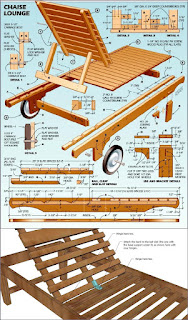Free chaise lounge blueprints for comfortable furniture projects
Free Chaise Lounge Blueprints for Comfortable Furniture Projects
The following document provides detailed information and considerations for crafting comfortable chaise lounges using freely available blueprints. While precise blueprints are not directly provided within this text due to the complexities of digital blueprint distribution and copyright concerns, this guide will furnish you with the necessary information to locate suitable plans, adapt them to your needs, and successfully construct a high-quality chaise lounge. We will explore various design elements critical to both aesthetic appeal and ergonomic comfort.
Understanding Chaise Lounge Design Fundamentals
Before embarking on a chaise lounge construction project, a thorough understanding of its design elements is paramount. A well-designed chaise lounge balances aesthetic appeal with functional comfort, offering a relaxing and supportive seating experience. Key considerations include:
Ergonomics and Comfort
The foundation of any comfortable chaise lounge lies in its ergonomic design. The angle of the backrest and the seat's depth significantly impact user comfort. A gently sloping backrest (typically between 110° and 120°) supports the natural curvature of the spine, while a properly proportioned seat depth ensures adequate leg and hip support without restricting blood flow. The lumbar support is crucial; an inadequately supported lower back will result in discomfort during prolonged use. Consider incorporating adjustable features for personalized comfort levels.
Materials Selection
Material selection greatly influences both the aesthetic and functional aspects of the chaise lounge. The choice of wood, upholstery fabric, and padding significantly impacts the longevity, comfort, and overall style of the finished product. Hardwoods like oak, mahogany, or walnut offer durability and an elegant appearance, while softer woods like pine might be more budget-friendly but require careful handling to avoid damage. Upholstery fabrics range from durable cotton and linen to luxurious velvet and leather, each providing unique aesthetic and textural qualities. Similarly, the density and thickness of padding directly affect the chaise lounge's comfort and support.
Structural Integrity
The structural integrity of the chaise lounge is paramount for safety and longevity. The frame should be robust enough to withstand regular use and weight without flexing or compromising its stability. Proper joinery techniques, such as mortise and tenon or dowel joints, are essential for building a durable and stable frame. The use of appropriate fasteners, such as screws and bolts, further enhances structural integrity. Consider the load-bearing capacity of chosen materials when selecting dimensions and designs.
Locating and Adapting Free Blueprints
While direct blueprint provision is not possible within this document, numerous online resources offer free furniture plans. These range from basic designs to more complex, detailed plans. Utilize search engines such as Google, Bing, or DuckDuckGo using keywords such as "free chaise lounge plans," "DIY chaise lounge blueprints," or "free woodworking plans chaise lounge." Explore online woodworking communities and forums where users share their projects and potentially offer plans. Websites dedicated to DIY projects and furniture making often provide free blueprints and tutorials.
Adapting existing blueprints might be necessary to match your preferences or available materials. You may need to adjust the dimensions, modify the design elements, or substitute materials based on your needs. When adapting plans, ensure the structural integrity remains uncompromised. Any significant alterations should be carefully considered, possibly requiring structural calculations to ensure the stability of the modified design. Always double-check dimensions and measurements before cutting and assembling the components.
Essential Tools and Materials
Constructing a chaise lounge requires a range of tools and materials, the specifics of which depend heavily on the chosen blueprint. However, a general list includes:
Tools
- Measuring tape
- Pencil
- Saw (hand saw, circular saw, or jigsaw)
- Drill
- Screwdriver
- Sandpaper (various grits)
- Clamps
- Wood glue
- Staple gun (for upholstery)
- Safety glasses
- Dust mask
Materials
- Wood (type and quantity depend on the blueprint)
- Screws and bolts
- Wood glue
- Upholstery fabric
- Foam padding
- Batting or fiberfill
- Staples
- Finishing materials (stain, paint, varnish)
This list is not exhaustive and may need adjustments depending on the complexity and design of your chosen chaise lounge blueprint. Remember to consult the specific blueprint for a complete and accurate list of necessary tools and materials.
Construction Process and Safety Precautions
The construction process follows the instructions provided in your chosen blueprint. Generally, it involves cutting the wood components to the specified dimensions, assembling the frame using appropriate joinery techniques and fasteners, attaching the padding and upholstery, and finally, finishing the chaise lounge with stain, paint, or varnish.
Safety is paramount throughout the entire construction process. Always wear safety glasses and a dust mask to protect your eyes and respiratory system from wood dust and flying debris. Use caution when operating power tools and always follow the manufacturer's instructions. Ensure proper ventilation when working with paints, stains, or varnishes. Clamp work pieces securely before cutting or drilling to prevent accidents. Take breaks to avoid fatigue and maintain focus. If unsure about any step, consult a more experienced woodworker or seek professional guidance.
Finishing Touches and Customization
Once the chaise lounge is assembled, apply the finishing touches to enhance its aesthetic appeal and durability. Sanding the wood to a smooth finish before applying stain, paint, or varnish is crucial for a professional look. Choose a finish that complements the style and color scheme of your space and adequately protects the wood from wear and tear. Consider adding decorative elements, such as decorative pillows or throws, to enhance comfort and personalize the chaise lounge to reflect your taste.
Remember, successful completion of your chaise lounge project requires careful planning, precise execution, and attention to detail. This guide serves as a comprehensive introduction to the process. Thorough research, careful selection of blueprints, and diligent adherence to safety precautions will greatly increase the likelihood of a successful and enjoyable DIY project resulting in a comfortable and stylish chaise lounge for years to come.

0 comments:
Post a Comment
Note: Only a member of this blog may post a comment.